A Plan To Save Third Ward Swing Bridge
Proposal calls for it to become a national model, 'the coolest nightlife spot in the city.'
Architect John Everitt has a big plan to repurpose the disused railroad swing bridge between the Historic Third Ward and the Harbor District as a marquee public gathering place in Milwaukee and a year-round cafe and bar.
Everitt wow-ed the Historic Third Ward Architectural Review Board Wednesday with the quality of the plan, created as his graduate thesis to earn his master’s in architecture in 2022 from UW-Milwaukee School of Architecture and Planning.
The 800-ton bridge, which is believed to have sat idle since at least the 1980s, would be rehabilitated so it can again swing and would also gain two new pedestrian paths, mirroring the railroad tracks that once ran across it, as well as a second level with a central cafe and bar. A structure would be built in the middle of the bridge to house the cafe and bathrooms.
“We can create a unique experience that can only be found in Milwaukee and set precedent for the rest of the country. These urban relics are Milwaukee’s heritage and can be adapted for use once more,” said Everitt. He compared its potential reuse to The High Line in New York City, an elevated park created from a former rail line, the Mill City Museum in Minneapolis and the Reichtstag government building in Berlin.
Everitt showed off his vision by using a combination of renderings, drone footage and 3D laser surveys.
The rehabilitation would be designed so that the bridge would rest primarily in the closed position, connecting Trestle Park in the Historic Third Ward with the planned site of Mandel Group‘s Harbor Yards development in the Harbor District. A new trestle connection on the south side would retract to allow small boats through. And if large boats came, or if an operator wants to entertain visitors, the bridge could swing out of the way.
“I’ve been told with a little grease the bridge can be up and running,” said Everitt of its ability to swing. City officials in attendance noted it would need a new electrical connection to the shore and possibly more than that.
Everitt thinks his idea would work during all four seasons.
“When I first started this project, I kept driving by this thing in January and realized this thing was going to be a ghost town in winter,” he said.
A sliding, translucent enclosure would be tucked into the bridge, with large doors that could be closed to create a heated interior space. A bubble-like, translucent roof would be installed to create an enclosure to make the space comfortable in the winter. A control tower currently on top of the bridge would be removed.
“You can turn on the lights, maybe close the doors in the fall, and the bridge turns into a lantern on the water and a beacon to everyone out on the town,” he said. It would be the “coolest nightlife spot in the city.”
“I hope you got an A for this,” said Alderman Robert Bauman, chair of the design board (he did).
“Your presentation is amazing,” said Department of City Development planner and review board member Greg Patin. “I mean you could be sitting here from [world-renowned] Norman Foster Architects right now. The quality of your presentation is as good as I’ve ever seen.”
Everitt worked on the project with architecture history professor Matt Jarosz through UWM’s Historic Preservation Institute and Pierce Engineers principal Sarah Frecska.
Want to see more or ask questions? Everitt will be displaying his scale model during Gallery Night, July 21, in a pavilion in the middle of N. Broadway. He’ll be south of E. Chicago St. at approximately 181 N. Broadway. You can also see the project on his website.
If you want to see what the bridge would look like if it could swing, you can watch a video on YouTube of its southern sister bridge between Bay View and the Harbor District.
There are plenty of reasons Everitt’s plan is a long shot. Starting with money and ending with the web of federal regulations that would govern its development, with city officials noting that the Army Corps of Engineers would likely be the actual permitting agency. But Patin, Bauman and others repeatedly praised Everitt’s work and encouraged him to continue to pursue the project and others.
Union Pacific, the bridge’s owner, would reportedly be willing to sell the bridge for $1. Bauman floated the idea of buying it in 2018. But ownership would include the liability to maintain it if the U.S. Coast Guard orders it out and any environmental contamination cleanup costs.
The Mandel Group, in 2018, began conceptually discussing leaving the bridge in its open position and building a new, retractable bridge through it to connect both sides of the river.
The bridge was built in 1915 by the Chicago & North Western Railway and long served as a critical piece of infrastructure on the company’s mainline between Chicago and St. Paul. Over 100 trains a day would roar over the bridge, known as Drawbridge #1556 in company documents, as they went north into the long-gone Lakefront Depot or south towards Chicago. The passenger trains of the era were in a hurry, as they had to live up to their name: the 400, which reflected the number of minutes it took to go between Chicago and St. Paul.
Everitt said it is the largest swing bridge in Wisconsin.
The idea of the swing bridge as a pedestrian bridge isn’t new. La Dallman Architects has won multiple national design awards for a plan to repurpose the swing bridge as a park in the middle of a new pedestrian bridge. NEWaukee predecessor Art Milwaukee proposed the “Art Island” on the bridge in 2013.
Everitt currently works for Bray Architects.
Renderings
2018 Mandel Group Plans
Trestle Park Photos
Existing Bridge
Bridge Model
If you think stories like this are important, become a member of Urban Milwaukee and help support real, independent journalism. Plus you get some cool added benefits.
Eyes on Milwaukee
-
Church, Cupid Partner On Affordable Housing
 Dec 4th, 2023 by Jeramey Jannene
Dec 4th, 2023 by Jeramey Jannene
-
Downtown Building Sells For Nearly Twice Its Assessed Value
 Nov 12th, 2023 by Jeramey Jannene
Nov 12th, 2023 by Jeramey Jannene
-
Immigration Office Moving To 310W Building
 Oct 25th, 2023 by Jeramey Jannene
Oct 25th, 2023 by Jeramey Jannene


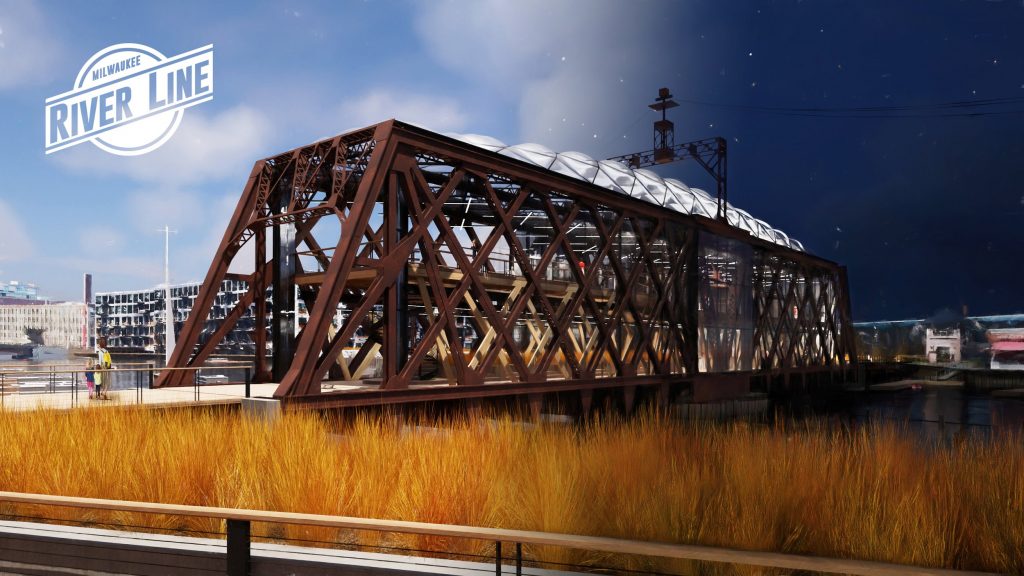
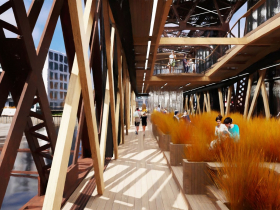
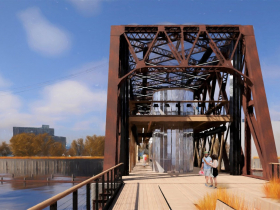
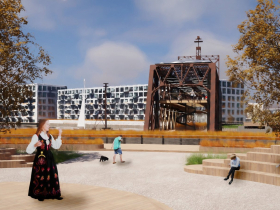
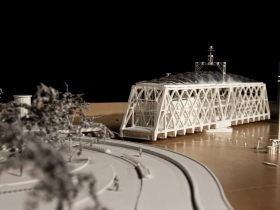
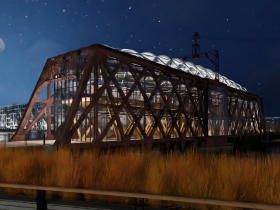
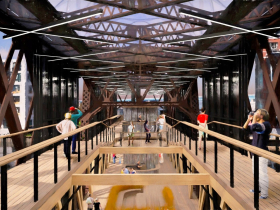
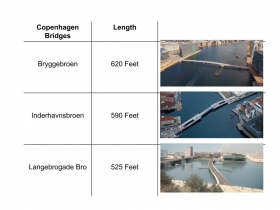
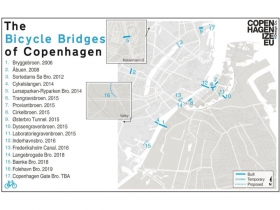
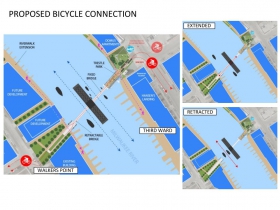
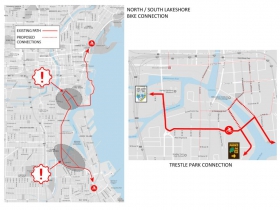
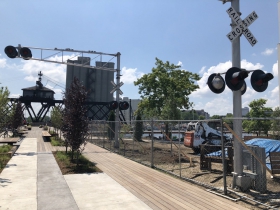
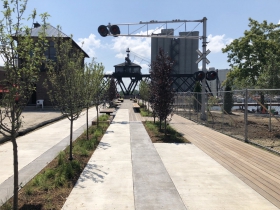
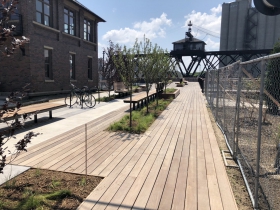
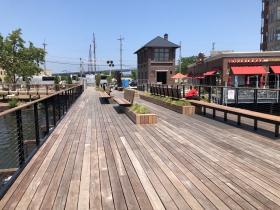
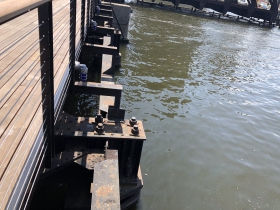




















It would be great to see it put to good use.
If it’s not put to any use, it should remain.
Its presence should be a reminder of the opportunity
Milwaukee squandered decades ago.
In the late 80s, right after they were elected, I wrote to both
Mayor Norquist and County executive Schultz, pointing out
that the abandoned Northwestern right-of-way was the last
possible location for a continuous¹ far South Side to far
Northwest Side rail rapid transit line in the entire eastern
half of the city.
I pointed out that a similar situation existed
in the abandoned Milwaukee Road Beer Line which went
from the Northwest side to the breweries, then terminated at 3rd Street
between Juneau and Highland in the form of a 6-track stub yard with
2 tracks already going into a reinforced concrete warehouse
suitable for conversion to a passenger station and office building.
Obviously it didn’t happen. (Except the office building)
Numerous less significant projects were built on both rights-of-way.
The beautiful North Avenue Viaduct that was tall enough to send
traffic over the right-of-way instead of through it was replaced
by a low mediocre arch-themed parody that guaranteed
the right-of-way would remain closed.
So yes if you can’t put it to good use, leave it as is
and label it to shame Milwaukee.
¹ At that time the only non-railroad use of the line was the
Italian Community Center. I suggested an easement
over, under or around it.
Brilliant idea!!! Can’t wait for the grand opening!
Marty Ellenbecker Norq the Dork hated brown people and didn’t want them anywhere near his urban white utopia. Well, unless it was a Hispanic female staffer bringing him an apple tucked between her thighs (Google it). He quashed a city development loan to a expand a business that would have created 200 hundred jobs on the near south-side. He tried raiding the City pension fund to build low income housing on the far NW side to move people out of near north-side. If you think about it, it makes sense for a guy who lived in Mequon. Yeah, for two years I was assigned to the fire house located half a block down from where he “lived” on S. 26th St near the Domes.
Kudos, and best of luck to make this happen. The bridge is a historical reference to the railroad history that made the city great, and it would be great to see it used to commemorate the cities heritage in a useful way. I can remember as a kid, going down there when the Baraboo Circus Train came into town; it was a thrill to see the steam engines pulling the circus wagons across that grand old lady of trestle bridge.
Thanks for the fleeting memory!
would be neat to be sitting on the bridge when it has to turn.